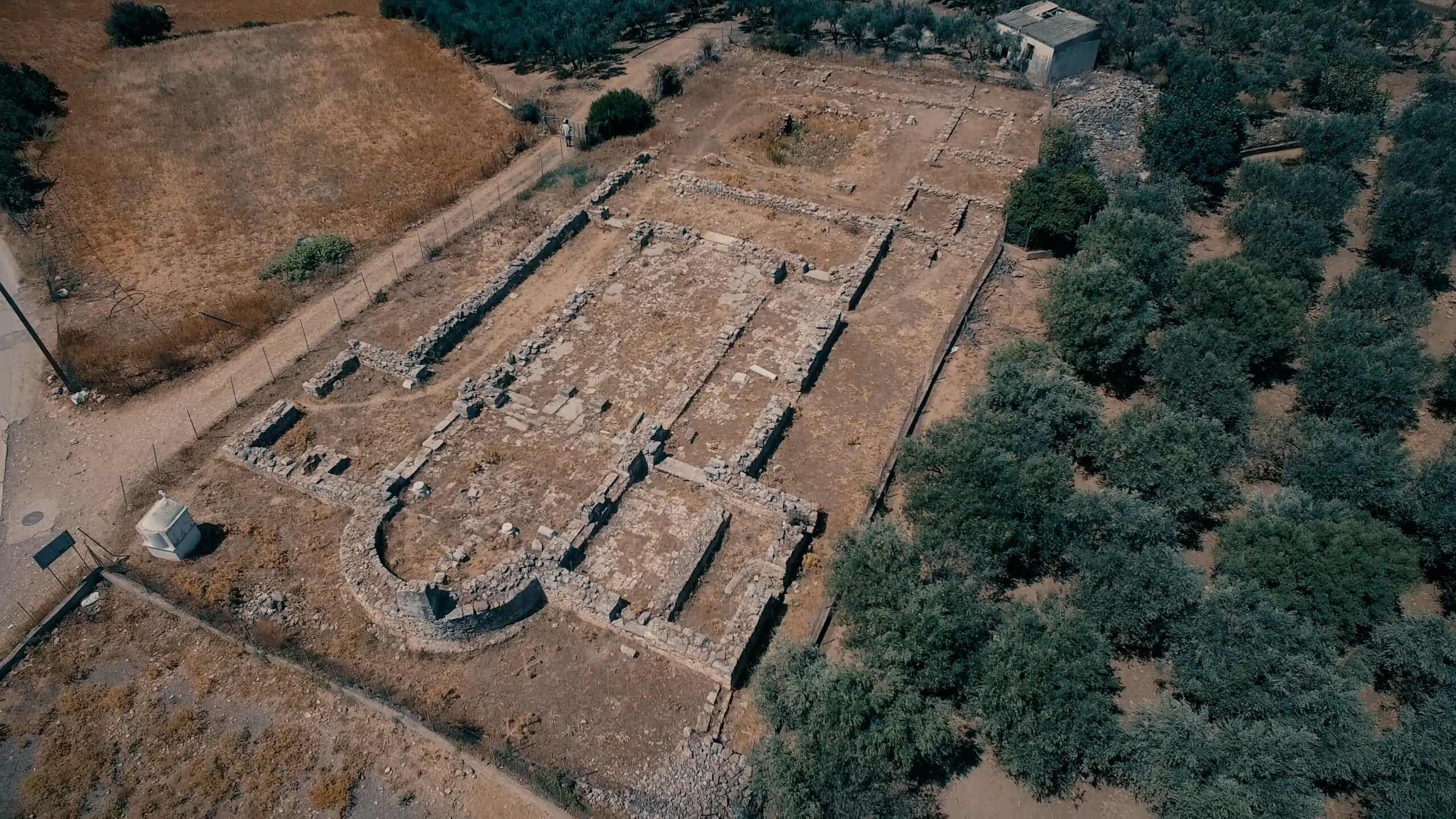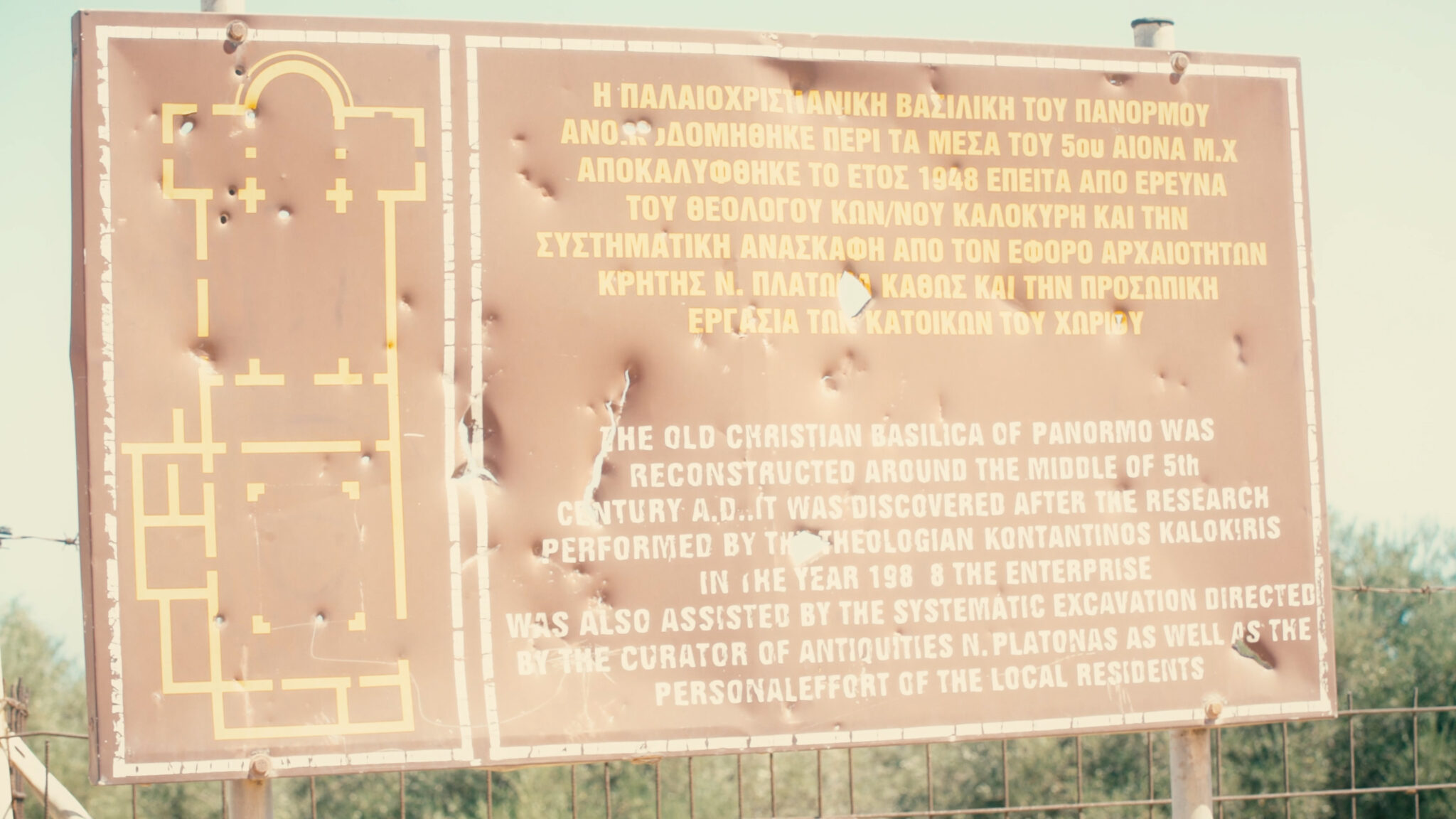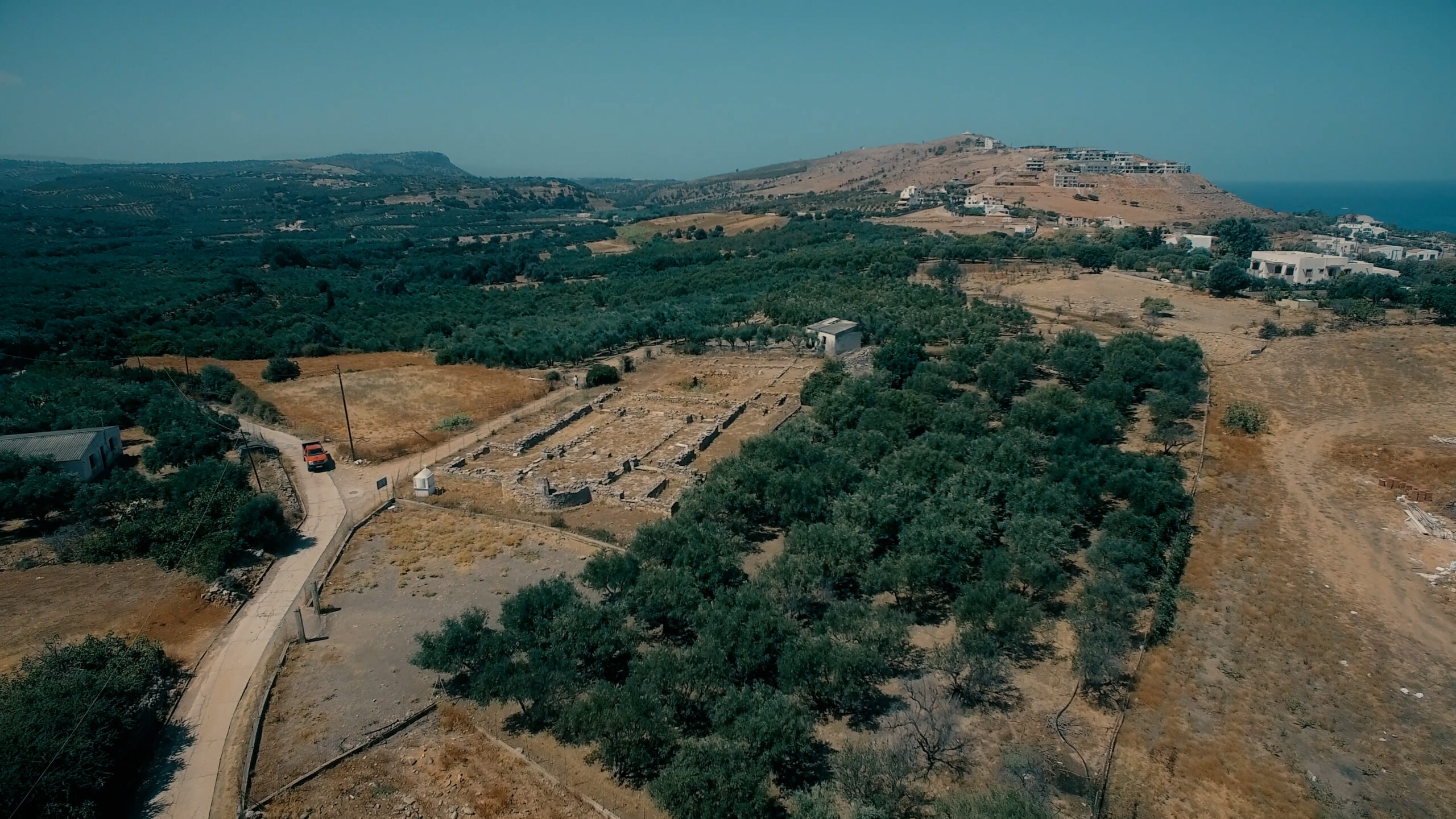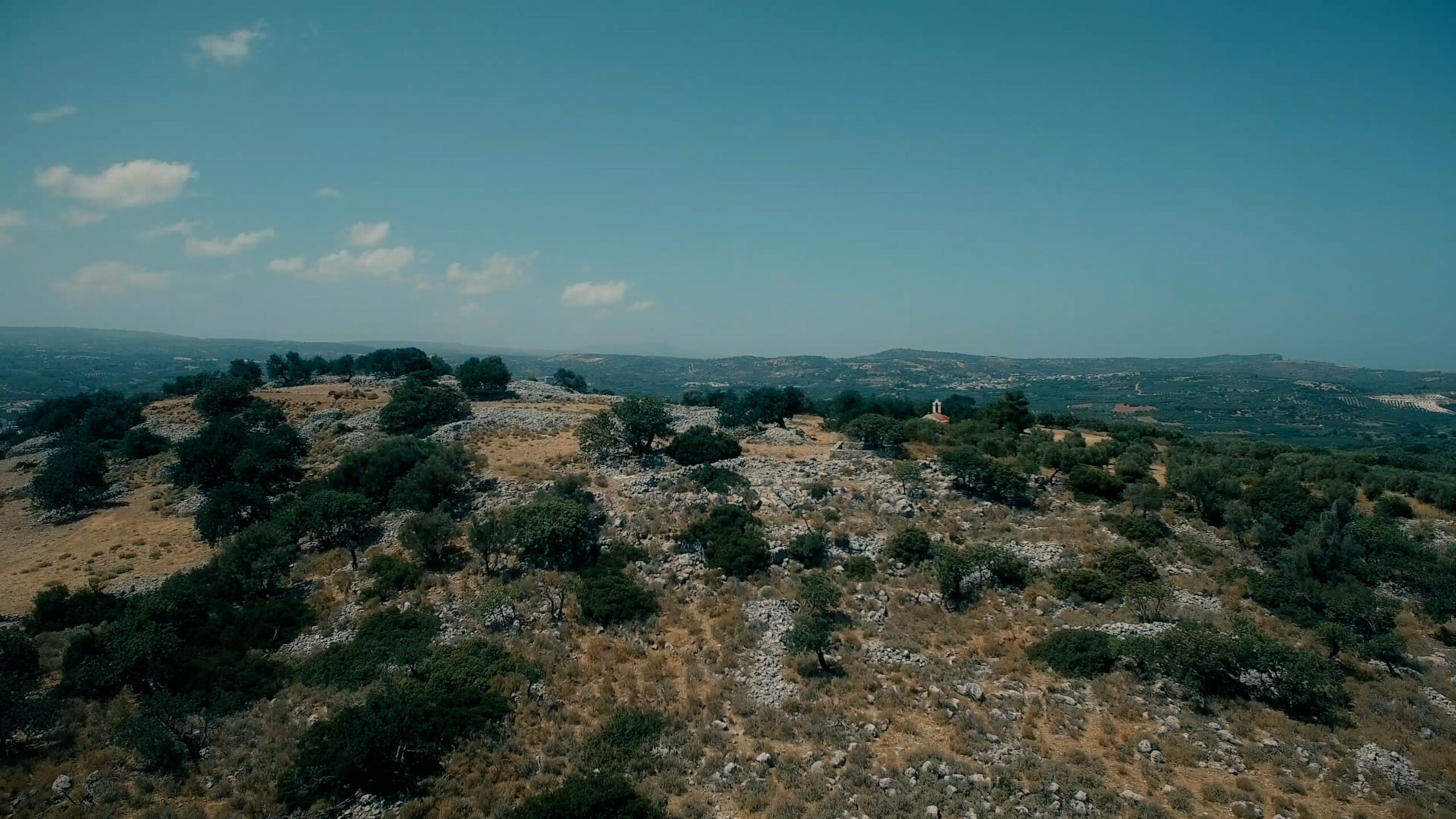Among the most important surviving basilicas of the island is the church of Agia Sophia in Panormos. Although the dedication of the temple is not known, tradition has preserved the name “Agia Sophia” both for the temple and for the location where it is located. The basilica was excavated by K. Kalokiri and N. Plato between 1947 – 1955. According to the excavators, it was the seat of the diocese of Eleftherni, which was moved after the destruction of the ancient city to Panormos. The original temple was built at the end of the 5th century, while construction interventions were carried out in two phases during the 6th century.
The temple has rich and important sculptural decoration, columns, capitals and pediments. It was built in the type of three-aisled wooden-roofed basilica with a prominent T-shaped transversal aisle. The three naves of the temple were separated from each other by tall pilasters bearing columns with Corinthian-style capitals from the 5th – 6th centuries. On them rested the columns of the Ionic-style arch.
The middle aisle was wider and ended in a large semi-circular arch, where traces of a symphony were revealed. In the area south of the Holy Step (pastoforio) there is a later brick structure, which is considered a swimming pool.
The floors of the aisles were paved in the north and central aisles and of compacted earth in the south. To the west it has a narthex and an atrium, in the center of which there is a large tank. North and west there are several vestiges whose use is not quite clear. Despite the destruction suffered by the temple during the Arab invasions in the 7th century, the discovery of coins of Leo VI (886 – 912) and the inscriptions of microscript writing on pessos and shields indicate the use of the space until the 9th century.



